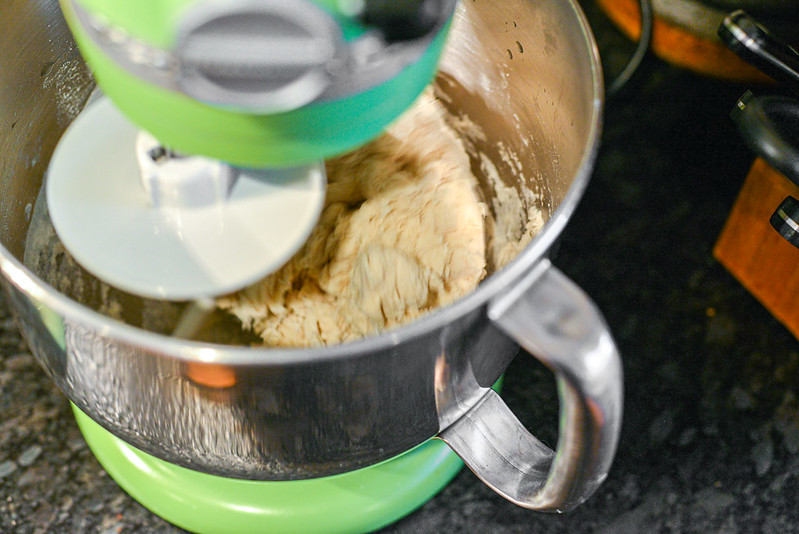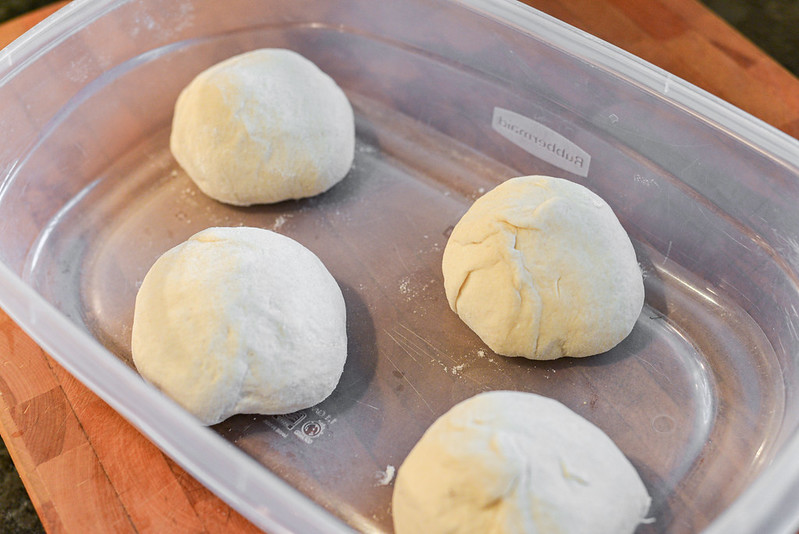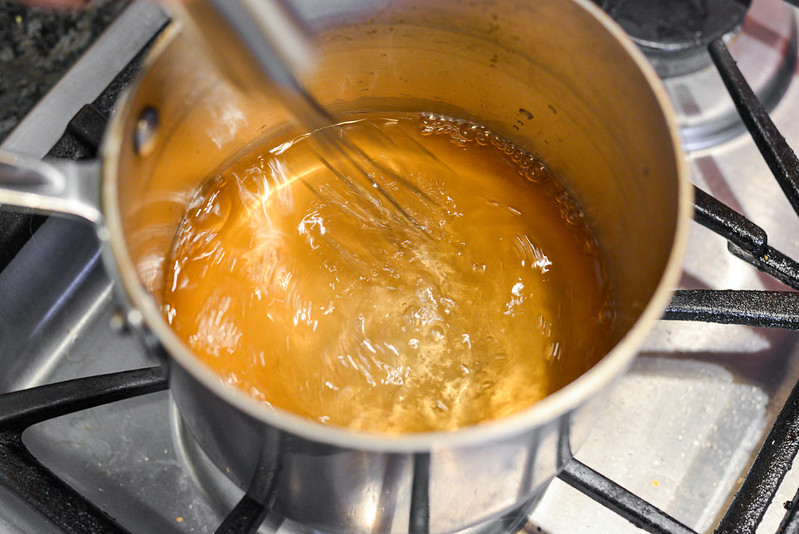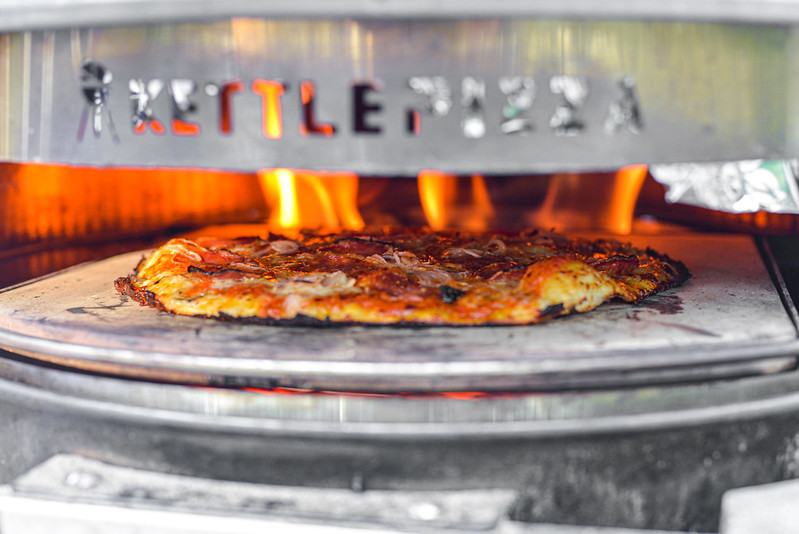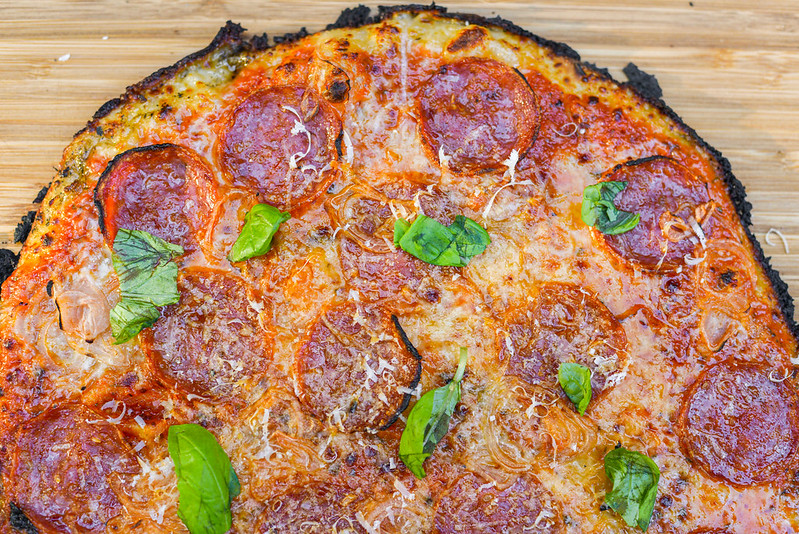Hot Sopressata & Pickled Shallots Bar Pie
I remember when New York City started allowing new coal ovens to be built and Neapolitan-style pizzerias were seemingly popping up everywhere. At that time, the hot take was also forgoing pepperoni in favor of hot sopressata, which is another cured hard sausage that's a little lighter on the spices, but heavier on funkiness. I jumped on that bandwagon, especially since the best sopressata to had was sold right by my work. The wholesale swapping for pepperoni didn't last long though because it's hard to beat that classic flavor, and I do think pepperoni is the superior topping. It's actually been quite awhile since I've made a hot sopressata pie, but during a bar pie session I did last year, the urge for this fat-laden, spicy sausage hit and I acted upon it, pairing the cured meat up with tangy and sharp pickled shallots to make a fairly minimalist pie that packed a ton of flavor.
Since all of my knowledge of thin crust, cheese heavy bar pies comes from my friend Adam Kuban, and he's a true pizza export, I've used his dough recipe and overall method since I started to make these pizzas myself and have not been let down by the direction he's put out into the world. After a short kneading stint in the mixer, the dough gets covered and allowed to rest at room temperature for six hours. In my experience, it takes awhile for the rising to start to happen, and I often think something's wrong because I tend to be impatient, but I've always been greeted by a dough that's over doubled in volume by the end of this time.
Following that, the dough is quartered up, set in a container, and placed in the fridge for two to three days. A lot of the flavor of the dough is developed during this cold fermentation stage. It's definitely a light touch, but also very noticeable—most pizza doughs I've made that don't include cold fermentation end up tasting kind of flat to me now.
In recent years, I've been leaning on pickled red onions in a lot of my recipes because they not only add a great tangy crunch, but they also provide a pop of color thanks to their purple skins. I'm not sure why I haven't thought to use shallots instead of red onions sooner because I'm much more of a shallots guy, preferring their more mild character, although both have their respective places. To prep a few large shallots for pickling, I merely removed the skins, thinly sliced them on a mandoline, and then stuffed them into a jar.
Next I whisked together apple cider vinegar, water, sugar, and salt in a small saucepan set over high heat. Once the solids were dissolved and the liquid began to boil, I poured the brine into the jar with the shallots, covered, and set it in the fridge until I was ready to use them.
Hot sopressata and shallots definitely felt like a topping combo that called for the standard fruity and acidic tomato sauce. I wanted a thinner style pizza sauce though, which is what my go-to recipe is. The effort to put this together is pretty minimal—after sautéing some garlic and red pepper flakes in olive oil, a whole 28 ounce jar of crushes tomatoes are added in and simmered, with a couple onion wedges tossed in, until the sauce thickens up. When I want to add a some more robustness and color, I'll include a couple tablespoons of tomato paste too, which I did in this instance. Once all done, the sauce is pureed with a hand blender and then finished with fresh bail, salt, and pepper.
For getting the right thin and even thickness for a bar pie crust, I used a rolling pin rather than attempt to stretch it out by hand. I have a couple 12-inch LLoyd's pans I use for bar pies, so I rolled the dough out in as much of a circle as possible to that size. Then I cut away any bits of dough that exceed the size of the pan and transferred the round into the pan itself.
Topping then commenced first with a layer of sauce the reached to about a half an inch from the edge of the dough. Then I sprinkled on a combo of low-moisture mozzarella and parmesan all over the pizza, all the way to the edges. Slices of the hot sopressata went on next, followed by pickled shallots, which I placed in most all of the gaps between the sausage slices.
It's a two step cooking process to get a great melted cheese along with an ideally crisp crust for this style of pizza. The first part involved cooking the pizza in the pan, and I used my KettlePizza here, which was blazing at 950°F, but to be honest, I've found it easier to get more ideal bar pie results in my oven running at 550°F. The KettlePizza cooked the pie in no time, rendering the cheese totally melted with grease pooling in mere minutes—this is what you want to happen.
The cheese and toppings are now pretty done much and the second step is all about crisping up the crust. To do so, I had to remove the pizza from the pan, but the crisped cheese around the edges did stick a bit. So to keep the cheese in tact and release the pie from the pan, I ran a very thin spatula around the edge and then slipped the pie out onto a pizza peel.
Back into the oven it next went. The crust was pretty flimsy at this point, but with just about a minute more of time, the bottom browned, charred, and crisped up very well and the pizza was done.
I'm not sure this pie needs, or really calls for, the basil I added, but it did make for more attractive photos. A final sprinkling of parmesan was a great touch though that I recommend doing—it added an extra hit of sharpness, nuttiness, and savoriness that went really well with the funk and heat of the hot sopressata. The pickled shallots were also key with their presence adding a tang that cut through some of the overall richness, but with with not such a strong character that it districted from the the primary players. I was really happy I made this as a bar pie too because its thinness meant that it was lighter and I was able to eat more of the pie than if it were Neapolitan, New York-style, or something along those line—I can definitely consume an entire 12-inch bar pie on my own with no problem. Although I thoroughly enjoyed this hot sopressata pie, and that sausage was no doubt the right fit in this topping equation, it was really merely a welcome interruption from my usual pepperoni, whose pairing with pickled jalapeños represents my go-to topping choice more often than not.

